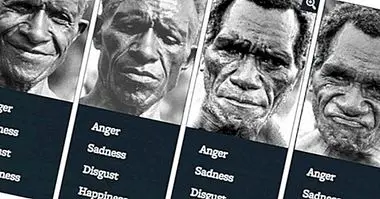The theory of the behavioral moment of John A. Nevin
I will start with a very simple question. One that we all have raised on occasion: What makes behaviors more and less easy to modify or even eliminate?
Readers will think of examples of acquaintances, or even of themselves, in those who have been able to modify behaviors that are impossible to change for others, such as stop biting their nails, quitting tobacco or resisting compulsive purchases.
Behavioral moment theory: what is it exactly?

Here comes into play one of the proposals to respond to our concern: the Conductual Momentum Theory by John Anthony Nevin (1988) , but first, we will explain some basic concepts of Psychology of Learning to put the mind to the point.
- Learning : It is the conscious or unconscious acquisition of knowledge and / or skills through study or practice. It can also be defined as a relatively permanent change in behavior because of reinforcement.
- Reinforcement : It is any element that increases the probability that a behavior will repeat itself. (For example, giving a pet candy to our pet when it responds to an order we have given it will cause it to do so again in the future)
- Continuous reinforcement : Consists in granting a reinforcer whenever the desired behavior is issued.
- Partial reinforcement : Consists in giving the reinforcer a few times, sometimes not in the same behavior. It can be established in every 5 correct answers (Fixed) or random (Variable) so that reinforcer could be given in behavior number 3, and in the next in 15 without there being a fixed number.
- Extinction : It is called like this, the abandonment of reinforcement to eliminate a behavior that was produced thanks to it.
Having these terms clear, we can begin to describe Nevin's Behavioral Moment Theory, or TMC from now on.
Explaining the resistance to change
Nevin proposed Behavioral Moment Theory to explain the resistance to change behaviors that, in many people, become automatic either by training or by a massive practice of them. For that reason, he proposed a concept: The behavioral moment, defined as the susceptibility of a behavior to be interrupted.
But what creates that susceptibility? What makes one behavior more resistant than another when it comes to eliminating it? The answer is found (among others) in the forms of reinforcement with which the behavior was acquired .
Research that supports this theory
Think of two mice that we have trained to press a lever. Each time they did, they would receive a small ball of food. The behavior is to press the lever, and the reinforcer the food pellet.
The mouse 1 has always been reinforced after pressing the lever, while the 2 has been partially reinforced (sometimes yes, sometimes not and without a fixed pattern). At this time, when the behavior is fixed, we want to eliminate it in our small rodents. Therefore, we stop dispensing food pellets every time the lever is pressed (behavior extinction).
I ask you, dear readers: which mouse will take longer to extinguish its behavior, that is, to stop pressing the lever: number 1 or number 2?
Reinforcement
The number 1 mouse, which learned by continuous reinforcement, will extinguish very quickly the behavior because you will notice that food is no longer falling into your trough no matter how many times you press the lever. That is to say: if he was always given food and suddenly he is not given, he will make a few attempts that, after being unsuccessful, will definitively desist.
Extinction
And the number 2 mouse? Will suffer a paradoxical effect explained by the Theory of Frustration (Amsel, 1962) by which his behavior not only will not begin to be extinguished immediately, but will increase.
Why does this happen? Mouse number 2 was reinforced sometimes yes, sometimes not. He does not know when a ball will fall again in his feeder, but he knows there must be a few keystrokes in which he will not fall and some in which he will. Therefore, you will press 20, 100, 200 times the lever until you finally understand, that there will be no more balls in the feeder if you emit the behavior and it ends up extinguishing.
Or what is the same: mouse number 1 had a lower behavioral moment than number 2.
How does this phenomenon affect us in our lives?
If we turn our gaze from the mice to ourselves, this explains a multitude of everyday actions:
- Look at the phone every so often to see if we have messages or calls.
- Refresh social networks in search of a Like.
- Look frequently towards the direction in which we know that a person we have been waiting for some time in the street comes from.
- Look at the mailbox even on holidays (maybe the postman would like to work ...) just in case there is a letter.
Disorders that influence
But not only can it be applicable in such everyday behaviors, but in disorders such as gambling, addictions, eating disorders ... in which a continuous "reinforcement" is apparently generated, but in reality it is not so. A gambler does not always get money out of the machine, a cigar produces instant pleasure, but it stimulates areas of the brain that increasingly ask for more, and more of the stimulus to be satiated, a person with binge eating disorder can fill up with food and be assaulted for a great discomfort for his little control that makes that "little pleasure" is dissipated ...
It is known by all the difficulty of abandoning an addiction or overcoming an eating disorder, and this is the resistance to the extinction of the behaviors that are issued, in relation to how they were acquired.
Even with everything, it is necessary to make a prudent note. Behavioral Moment Theory has given an excellent framework for studying resistance to change and the extinction of behavior, but logically, the complexity that characterizes us, in particular, to human beings, makes it unlikely that only the behavioral moment explains extinction on its own. In any case, it is a very interesting theory to take into account for our knowledge.



















